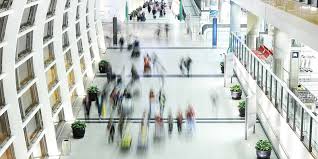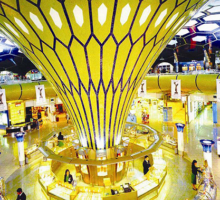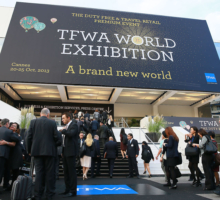Selling in the few seconds available
A couple of years ago, I was having dinner with two colleagues. One of them, specialized in the wine trade said something, probably trivial to me, which gave me something to think about for days: “Italians make silver wine from gold grapes, the French gold wine from silver grapes. Yet, French wines have greater success globally”; then carried on by saying, “it’s all a question of marketing, they are better at conveying a quality image, even through the label design on the bottles”.
So, everything begins with the packaging, especially when a brand still hasn’t reached great recognition on the market.
If you think that packaging is to be considered a mere container, because what really matters is the product and anyone can design it, then think again, you are losing out on an important opportunity.
For whatever reason you are taking part in the exciting world of travel retail, you will realise by continuing to read this article that you must focus greatly on the packaging of the products you work with.
I will never stop telling my employees and customers how crucially important the quality of products offered to consumers is. But it isn’t enough!
Packaging significantly influence purchasing decisions and neglecting this simple assumption will lead you to missing out on growth opportunities.
Travel retail, then, as we well know, is a world apart, full of peculiarities, even in the dynamics of the choice and creation of product packaging.
Let’s proceed in the correct order, by starting to delineate the functions of good packaging and its winning features.
PACKAGING AS MEDIA
The main function of the packaging of your products is to communicate with your potential customers. What?
Differentiation
The appearance of your products on the shelves of retail locations is firstly needed to differentiate them from competitors.
Imagine seeing, among many standard packs of rice (the classic cardboard box), a cylindrical tin with a nice label and, maybe, an unusual naming. Obviously, it will be the “strange” and well done package that attracts your attention. You may well decide not to buy that tin of rice (you would be making a mistake as it really exists – it is called Acquarello – and it is also very nice), but I bet that that brand would remain indelibly imprinted in your mind. Besides, isn’t the travel retail market, first and foremost, an exemplary global showcase of products?
Now, let’s change perspective. Imagine not being a customer but a supplier, who, with a great effort of energy and resources, has managed to “place” the rice brand he has in the catalogue on the shelves of a duty free. Would you really want to be the one who proposes yet another plain cardboard box?
For each product sector, travel retail customers find themselves faced with a wide range of possible products to choose from, often in very short times (e.g. between one flight and another), and your products must manage to show their uniqueness and attract attention efficiently.
EVERY DETAIL COUNTS, EVEN COLOURS PLAY AN ESSENTIAL ROLE
For decades, psychologists and marketing professionals have studied and classified, sometimes with conflicting results, the way in which the human brain responds to visual stimuli, induced by different ranges of the light-frequency spectrum. Different colours – and they all agree on this – lead to different and often recursive mental associations.
This means that in the presence of certain colours in product packaging, potential customers react according to standard mental associative dynamics. For example, products with white packaging transmit values such as safety and purity (yes – like wedding dresses). Even different shades of the same colour can convey very different messages. This is in the case, for example of “sky blue” and navy blue”; most people associate the first one to a playful dimension, and the second, to the symbolic universe that encompasses the characteristics of being professional and reliable.
But different cultures respond to the same colours in different ways. Yellow for example, is associated to joy in Europe, but to mourning in Egypt.
Therefore, should you also worry about developing different packaging versions of your products to adapt them to different regional markets? Yes, you should!
EXCLUSIVE FORMATS FOR TRAVEL RETAIL
One of the reasons that more and more often triggers purchasing products on the duty-free shelves is the uniqueness of the packaging designed for the travel retail circuit.
The classic example of this purchasing trend is represented by wines and spirits; according to a TFWA survey, exactly 49% of customers purchase wines and spirits simply because of their unique packaging.
Leading brands have long-realised this trend and consequently, continue to create special packaging for their products sold in duty free shops.
This is the case in the “Time for Tea-giftset” introduced, exclusively on the travel retail market, by the famous brand of Hendricks gin (the packaging is decorated with graphics related to the travel world).
SPECIALIZED AGENCIES
The packaging demand for travel retail is so high it has encouraged to creation of design agencies, specialised in the creation of packaging dedicated to duty free. They include, for example, Cheeeeese (www.cheeeeese.com/portfolios/travel-retail), based in different countries around the world, and the British Vivid Brand (www.vividbrand.com/views/travel-retail-spirits).
My work concerning the brands I represent never finishes with merely proposing their products to retail outlets. I recommend them as I do you, to always create packaging able to perform each of the functions listed below and therefore, to conclude, win the competition in those few seconds available when the customers’ gaze browses the products on the shelves:
– attract attention;
– communicate why your product is special;
– transmit the quality of your product;
– make the origin of your product clear (this is really crucial in my case of working with Made in Italy products);
– express, enhance and let the brand identity of your product by memorised.




